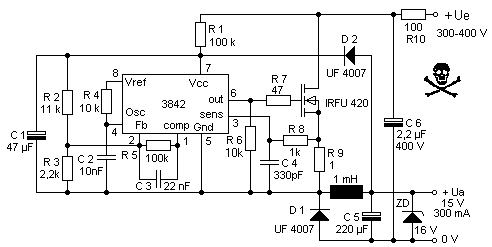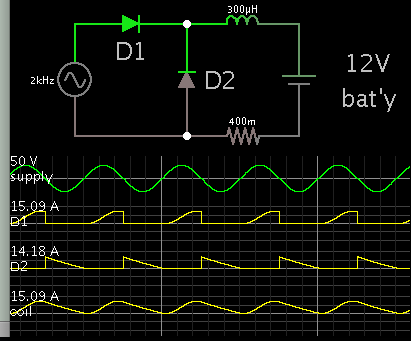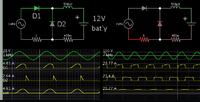mr_W
Junior Member level 2
Hi all,
I am working on improving electric installation on older type KTM motorbike, and there is this nasty permanent magnet alternator giving out AC ranging from 20V up to 70V depending on RPM. The idea is to make switching step down regulator that takes this type of input and give out 13.8V for charging just regular Pb accu and running other accessories.
However, given my zero level experience with smps other than using ready-made modules I am clueless on how to proceed with this. In particular, the high end input voltage is giving me trouble, as all of the ready available ICs that would make this easy accept up to 40V give or take some.
What I figured out is that I need simple enough circuit, yet driving external FET able to work with high voltage. Did some research and turned out mc34063 is *not* a good choice, maybe UC3842A?
Vcc for the IC could be taken from battery, actually, is that good direction?
I'd need some pointers, ideas, maybe schematics.. Just something to lighten my way Thanks.
Thanks.
I am working on improving electric installation on older type KTM motorbike, and there is this nasty permanent magnet alternator giving out AC ranging from 20V up to 70V depending on RPM. The idea is to make switching step down regulator that takes this type of input and give out 13.8V for charging just regular Pb accu and running other accessories.
However, given my zero level experience with smps other than using ready-made modules I am clueless on how to proceed with this. In particular, the high end input voltage is giving me trouble, as all of the ready available ICs that would make this easy accept up to 40V give or take some.
What I figured out is that I need simple enough circuit, yet driving external FET able to work with high voltage. Did some research and turned out mc34063 is *not* a good choice, maybe UC3842A?
Vcc for the IC could be taken from battery, actually, is that good direction?
I'd need some pointers, ideas, maybe schematics.. Just something to lighten my way


